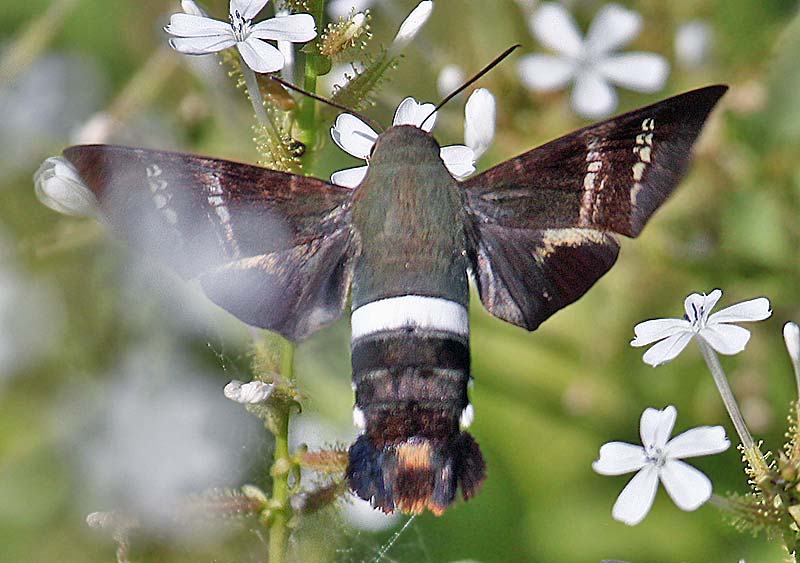
There have been three species of Aellopos Sphinx Moth documented for Texas; here are photos of all three, with notes on their identification and distribution within Texas:-
There are three areas of the wings that assist in identification:
- on the forewing the inner pale band consists of a thinner outer line separated narrowly from a thicker inner line, plus for titan and clavipes a slightly inwards-displaced black spot at the top end of the pale line (this black spot is absent for fadus)
- on the forewing the outer pale band is different for each species:
titan has four solid whitish spots, the lowest one indented and the upper three almost in a straight line; there is sometimes a smudged obscure fifth top spot
clavipes has three solid whitish spots forming a distinct arc; sometimes the uppermost spot has one(occasionally two) tiny bits split off from the inner tip.
fadus has a straight line of five whitish spots (sometimes also obscure additional spots at each end of this line) - at least one and up to three of these spots are split in two vertically by a thin dark line.
- the hindwing is dark brown with a variable pale smudge on the central leading edge (usually obscured by the forewing) for all forms, with slight differences:
titan has a bright white band at the rear corner of the inner edge
clavipes lacks any whitish on the rear corner of the inner edge, but sometimes a paler brown smudge is present almost into this corner; some individuals also have a series of small golden bars on the upper-central area
fadus has a washed-out paler area on the rear corner of the inner edge plus a thin pale fringe down the entire inner edge. Neither of these paler areas are prominent, and the hindwing can often appear all-dark; some individuals also have a series of small golden bars on the upper-central area.
NOTE: there is a fourth taxon - tantalus - known from Florida (with strays as far north as New York). Its status in Mexico is unclear (it occurs widely in the Caribbean and South America); externally it can look identical to clavipes except that it is smaller and tends to have a warmer brown tone to the wings, and more-often has some reddish color towards the tip of the abdomen. A few individuals of tantalus have some or all of the three outer whitish FW spots reduced to tiny spots or completely absent, unlike any clavipes; those tantalus with three full spots are probably not separable from clavipes without genitalic examination.
The most widespread and commonest
form is titan, with records from numerous localities across the eastern two-thirds of the state (but uncommon in the LRGV).
This titan is from Cibilo Creek Nature Center, Boerne, Kendall county (north of San Antonio) on September 20, 2011:
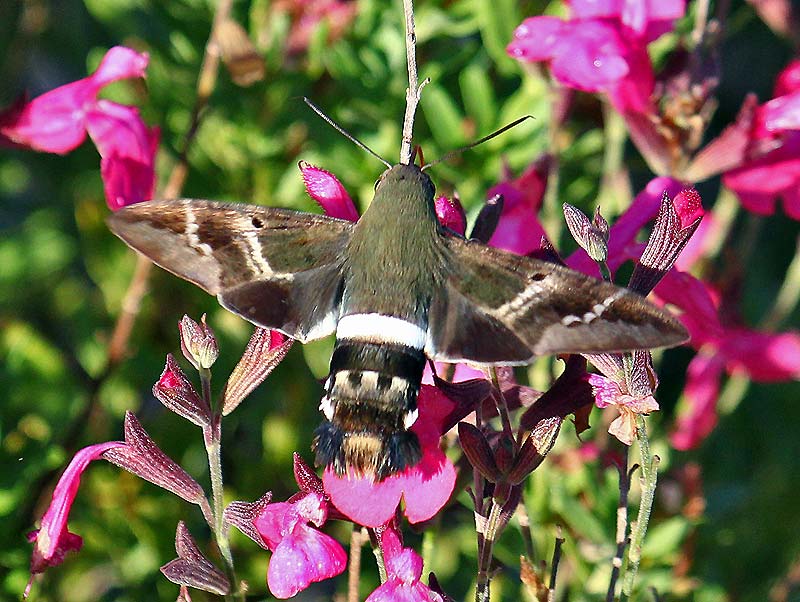
This titan is from Estero Llano Grande State Park, Weslaco, Hidalgo county on October 20, 2009:
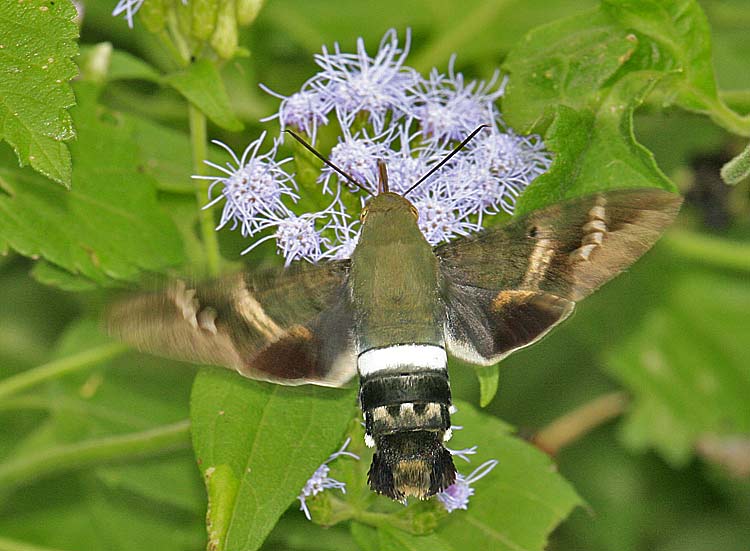
The most common
form in the LRGV is clavipes, with a few other scattered records from central/western Texas.
This clavipes was at NABA Butterfly Park, Mission, Hidalgo county on October 26, 2011:
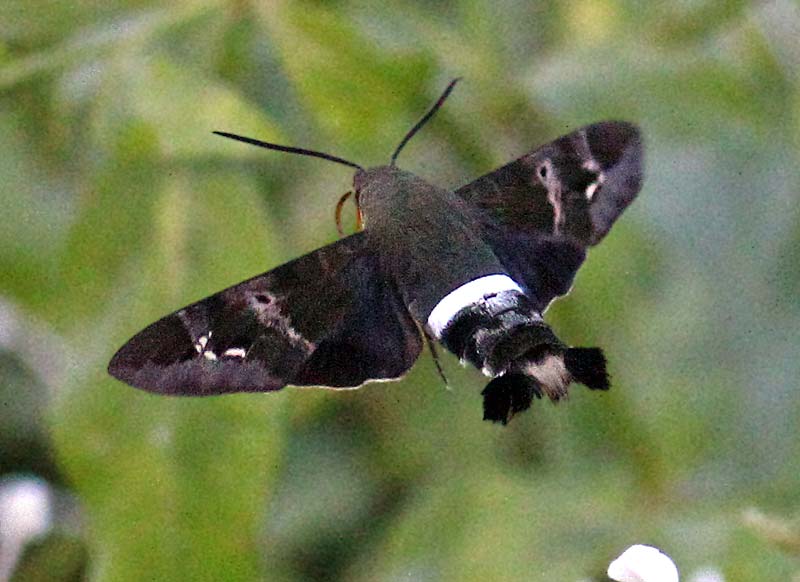
note that the outer pale band is visible from below:
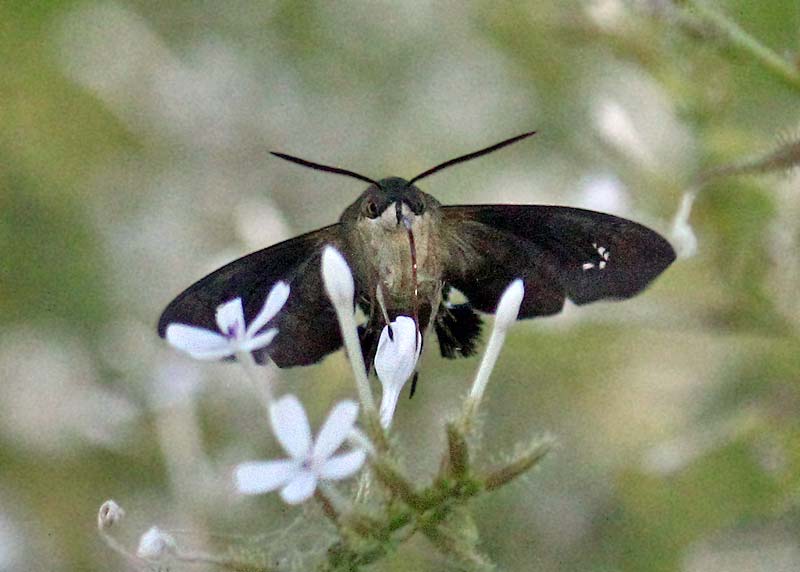
This is a second clavipes at NABA Butterfly Park, Mission, Hidalgo county on October 27, 2011; NOTE the golden marks on the upper-central part of the hindwing - apparently these can be found on a few clavipes and more-regularly on tantalus (see above):
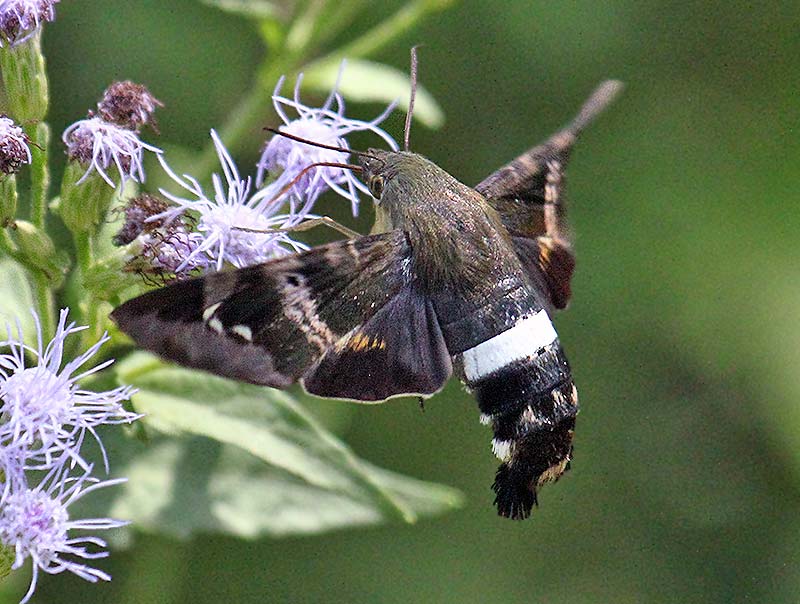
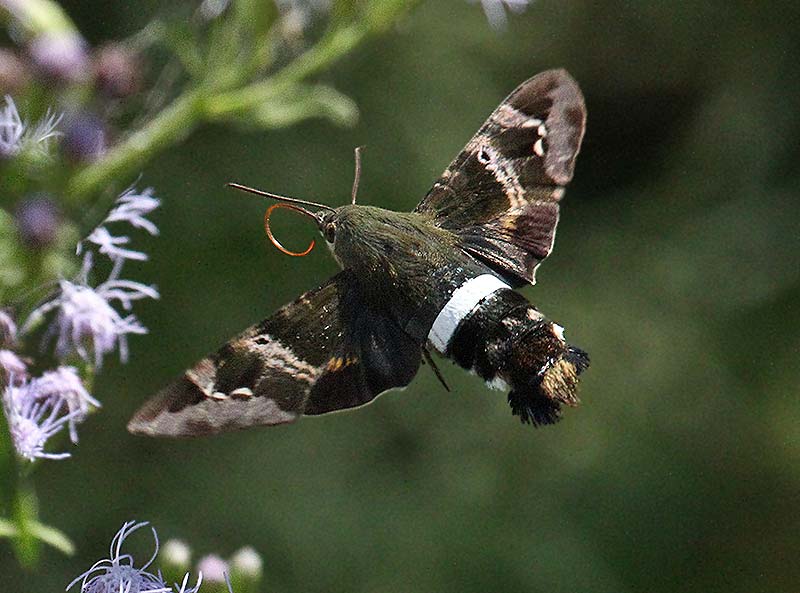
The rarest form in Texas (and the United States) is fadus; there are a handful of old historic records from as far north as Houston, but a Waco, McClennan county record in August 2011 plus the individual below are the only two modern records for the United States.
This fadus was at NABA Butterfly Park, Mission, Hidalgo county on October 26, 2011:
